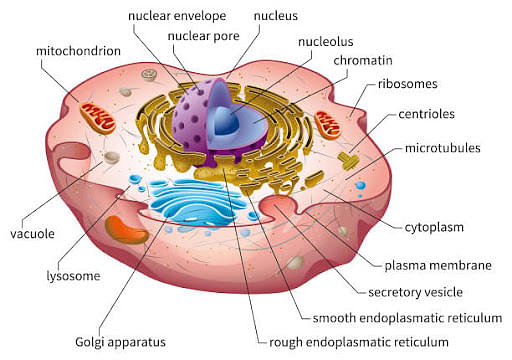Question:
Cellular totipotency is demonstrated by
Cellular totipotency is demonstrated by
Updated On: May 5, 2024
- Only gymnosperm cells
- All plant cells
- All eukaryotic cells
- Only bacterial cells
Hide Solution
Verified By Collegedunia
The Correct Option is B
Solution and Explanation
Totipotency is the ability of a living somatic plant cell to develop into a complete plant. It was first demonstrated by Steward et. al (1964) using phloem cells of carrot. This technique is now used for multiplying rare and endangered plants through micro- propagations. This technique is widely used for multiplying plants e.g. - Chrysanthemum, Dioscorea floribunda, Coleus, Crotons, carnation plants etc.
Was this answer helpful?
2
0
Top Questions on Cell: the unit of life
- Which organelle is primarily responsible for producing ATP in a cell?
- MHT CET - 2025
- Biology
- Cell: the unit of life
- Which organelle in a eukaryotic cell is primarily responsible for synthesizing proteins destined for secretion?
- MHT CET - 2025
- Biology
- Cell: the unit of life
- Which of the following organisms or organelles contain 70S ribosomes?
- MHT CET - 2025
- Biology
- Cell: the unit of life
- Which term is used for cells performing similar functions and cells collecting intracellular material?
- AIIMS - 2024
- Biology
- Cell: the unit of life
- What is the movement of cytoplasm within a cell called?
- MHT CET - 2024
- Biology
- Cell: the unit of life
View More Questions
Questions Asked in NEET exam
- A microscope has an objective of focal length \(f_o = 2\) cm and an eyepiece of focal length \(f_e = 4\) cm. The tube length of the microscope is \(L = 40\) cm. If the distance of distinct vision of eye is \(D = 25\) cm, the magnification in the microscope is:
- NEET (UG) - 2025
- Optical Instruments
- Which one of the following is an example of ex-situ conservation?
- NEET (UG) - 2025
- Ex-Situ Conservation
- Which one of the following compounds can exist as cis-trans isomers?
- NEET (UG) - 2025
- Organic Chemistry
- Who proposed that the genetic code for amino acids should be made up of three nucleotides?
- NEET (UG) - 2025
- Molecular Biology
- An electron (mass \(9 \times 10^{-31}\) kg and charge \(1.6 \times 10^{-19}\) C) moving with speed \(c/100\) (\(c\) = speed of light) is injected into a magnetic field of magnitude \(9 \times 10^{-4}\) T perpendicular to its direction of motion. We wish to apply a uniform electric field \( \vec{E} \) together with the magnetic field so that the electron does not deflect from its path. (speed of light \(c = 3 \times 10^8\) m/s):
- NEET (UG) - 2025
- Electric Field
View More Questions
Concepts Used:
Cell: The Unit of Life
- A cell is derived as the functional and structural unit of life. Every cell is surrounded by a cell membrane that dissects the external and internal environments of the cell. The interior environment of a cell is called the cytoplasm.
- It carries cellular machinery and structural elements. The nucleus is present in the center of the cell, which includes all the hereditary information of an organism. Some of the molecules present in the cell are protein, carbohydrates, starch, and sugar.
Read More: Fundamental Unit of Life: Cell
Parts of Cell:
The different parts of a cell and their functions are as follows:
- Cell Membrane
- Cell Wall
- Nucleus
- Cytoplasm
